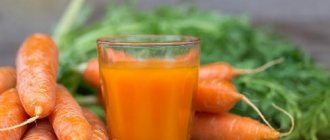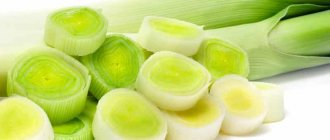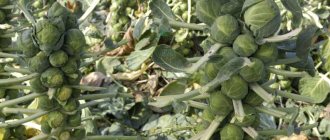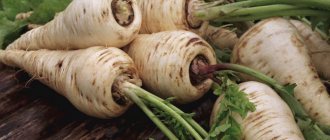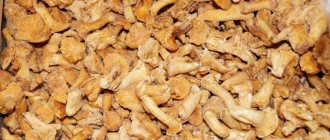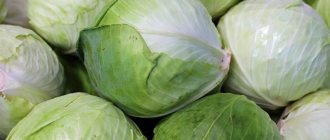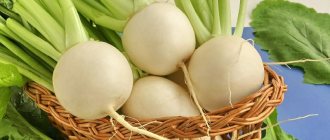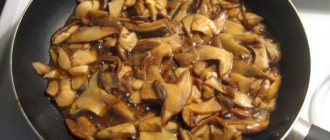Celery is a healthy, tasty vegetable that many people enjoy. It contains many vitamins, micro and macroelements that help restore the body's protective functions and calm the central nervous system. Widely used in cooking for cooking meat, poultry, vegetable dishes, soups and various sauces.
In winter, it is impossible to find such a valuable product, so housewives have adapted to storing it in jars for the winter. Not only leaves and petioles are used, but also the root itself. We bring to your attention a selection of the best recipes for preparing celery for the winter.
With garlic
The snack can be added to any dish. To obtain a more delicate preservation, it is recommended to clean the stems by removing inedible and coarse fibers. Let's look at how you can prepare celery stalks for the winter.
Products:
- garlic - 70 g;
- celery stalks - 700 g;
- table vinegar - 25 ml;
- granulated sugar - 50 g;
- laurel - 3 leaves;
- filtered water - 2 l;
- table salt - 50 g.
Pour the required amount of liquid into a saucepan, add salt and cook until completely dissolved. Meanwhile, combine the acid with granulated sugar and place in salted water, stir.
Rinse the celery stalks and chop them. Place peeled garlic cloves, bay leaves on the bottom of sterile jars, and celery on top. Pour in the prepared sweet and sour mixture, cover and sterilize for a quarter of an hour. Carefully remove containers with contents, seal tightly, turn over and cool.
Petiole celery for the winter
An excellent vitamin salad for long-term storage. There is no need to sterilize the snack after cooking. How to prepare stalked celery for the winter?
Products:
- carrots - 550 g;
- juicy tomatoes - 1.2 kg;
- zucchini - 1.2 kg;
- celery petioles - 1.2 kg;
- rock salt - 40 g;
- granulated sugar - 50 g;
- vegetable oil - 130 ml.
Petiole celery
- Wash the carrots and peel off the skin in a thin layer. Cut into strips on a grater for vegetable salads. Rinse the tomatoes, cut out the place where the stalk is attached and chop into half rings. Peel the zucchini and remove seeds, cut into medium-sized cubes. Wash the celery stalks and chop coarsely.
- Combine the prepared vegetables in a large saucepan. Add salt, sugar and butter, stir. Cover and leave on the kitchen counter to allow the ingredients to release their juices.
- Place the container with the salad on the stove, turn on medium heat and cook for 30 minutes. Place the hot snack into sterile jars, seal it tightly, turn it over and cool.
Best time to harvest
Timely harvesting ensures that it will last a long time and will not lose its aroma and nutrients. When to harvest and how to store celery root? Let's figure it out in order.
We recommend reading: Leaf and petiole celery: how to preserve it for the whole winter at home
Do not rush to remove vegetables from the garden. The longer it stays in the ground, the better. This allows the root to acquire the following qualities:
The question of when to harvest celery is a very important one. A mature root crop is ready for transportation and storage; it is not afraid of damage, spoilage, or rotting.
We also recommend reading:
Harvesting, harvesting and storing parsley root Cabbage: how to harvest and store fresh. Canning, drying, freezing How long to store cauliflower at home: cellar or refrigerator? Zucchini for the winter: how to store a dietary product at home
Options for harvesting greens
The following are considered the most effective ways to preserve celery leaves:
- Dried . Separate the green leaves from the stems. Tie into small bundles and place in a well-ventilated, dark area. The second option is to spread the leaves on a newspaper in a thin layer and wait until they dry completely. Drying time - 30 days. After grinding the aromatic herb into powder, place it in a glass container for storage;
- Freezing is the most popular way to preserve fresh, flavorful greens. Wash the leaves, dry and chop finely. Place in prepared disposable bags or containers and place in the freezer.
There is 3 ways to preserve vitamins and nutrients in spicy herbs - dry salting . Let's look at step-by-step instructions on how to prepare leaf celery for the winter.
Products:
- dill - 100 g;
- parsley - 100 g;
- celery - 100 g;
- rock salt - 200 g.
Wash the greens, place on a dry towel and dry. Finely chop and pour into a convenient bowl. Add table salt and mix thoroughly. Cover and leave on the kitchen counter for half an hour.
After time, place in sterile jars, seal tightly and store in a cool place. The aromatic seasoning will perfectly complement any dish and saturate it with useful substances.
Celery for harvesting
Leaf Celery Soup Mix
Products:
- onion - 500 g;
- carrots - 500 g;
- sweet capsicum - 500 g;
- celery - 200 g;
- juicy tomatoes - 500 g;
- parsley - 30 g;
- dill - 30 g;
- table salt - 30 g.
Peel the carrots and chop into thin strips. Remove the stem and seed pod from the capsicum and cut into strips. Do the same with onions. Rinse the tomatoes, cut into 2 parts, and chop into cubes. Wash fresh herbs and chop finely.
Combine prepared vegetables in a large saucepan. Add salt, mix thoroughly. Cover and leave on the kitchen counter for 30 minutes. Pack into sterile jars, seal tightly and refrigerate.
Useful and harmful properties
Fresh stems contain a lot of useful substances, so this product has a beneficial effect on the human body. The plant has a rich composition - its leaves contain vitamins A, B1, B2, B3, B5, B6, C, E, K, valuable amino acids, essential oils and microelements, as well as fiber.
Did you know? Celery is a “negative calorie” food—the body spends more calories digesting it than it receives in return.
- Celery has the following beneficial properties: slows down the aging process in the body;
- relieves fatigue and helps fight stress;
- improves digestion;
- helps normalize water-salt metabolism;
- eliminates headaches;
- lowers blood sugar levels in diabetics;
- has a beneficial effect on the functioning of the heart;
- reduces joint pain and relieves swelling;
- increases the overall tone of the body;
- promotes wound healing;
- stimulates brain function;
- removes toxins from the body, cleanses the blood;
- strengthens the immune system;
- helps cope with diseases of the genitourinary system;
- increases sexual desire;
- Helps effectively fight excess weight.
Despite the long list of beneficial properties, when consuming the plant, you must follow the norm, because in large quantities it can be harmful to the body.
- This product is contraindicated in the following cases: hypotension - the leaves and roots of the plant lower blood pressure, which causes a deterioration in health;
- presence of allergies - the stem contains substances that can cause an allergic rash;
- acute diseases of the digestive system (ulcers, gastritis) - by stimulating the production of gastric juice, the product increases pain in the stomach and intestines;
- last trimester of pregnancy - the stems of the plant can cause food allergies in the baby;
- uterine bleeding - the product stimulates blood circulation, so it can aggravate the situation;
- for women during lactation - the constituent elements of celery enter breast milk, change its taste and smell, and can also cause allergies in the child;
- urolithiasis - the product has a strong diuretic effect on the body, which can provoke the movement of large stones.
Important! The daily intake of celery for a healthy adult is 160–200 g.
Vegetable juice for the winter
The juice is prepared from all parts of the plant ingredient: root, petioles, leaves.
- Wash the plant and divide into components. Remove the skin from the root in a thin layer and chop into slices.
- Place the leaves, stems and roots in a blender bowl and grind until pureed. Place the finished mass in gauze folded in several layers and squeeze the juice into a glass. Add 15 ml of olive oil to 200 ml of freshly squeezed juice, mix and drink.
- To prepare the juice for the winter, it is recommended to freeze it in portions. In winter, when you need to simply remove the ice from the mold and add it to any fruit drink. That's all, the celery juice is ready for the winter.
Useful and harmful properties
Fresh stems contain a lot of useful substances, so this product has a beneficial effect on the human body. The plant has a rich composition - its leaves contain vitamins A, B1, B2, B3, B5, B6, C, E, K, valuable amino acids, essential oils and microelements, as well as fiber.
Did you know? Celery is a “negative calorie” food—the body spends more calories digesting it than it receives in return.
- Celery has the following beneficial properties:
- slows down the aging process in the body;
- relieves fatigue and helps fight stress;
- improves digestion;
- helps normalize water-salt metabolism;
- eliminates headaches;
- lowers blood sugar levels in diabetics;
- has a beneficial effect on the functioning of the heart;
- reduces joint pain and relieves swelling;
- increases the overall tone of the body;
- promotes wound healing;
- stimulates brain function;
- removes toxins from the body, cleanses the blood;
- strengthens the immune system;
- helps cope with diseases of the genitourinary system;
- increases sexual desire;
- Helps effectively fight excess weight.
- This product is contraindicated in the following cases:
- hypotension - the leaves and roots of the plant lower blood pressure, which causes deterioration in well-being;
- presence of allergies - the stem contains substances that can cause an allergic rash;
- acute diseases of the digestive system (ulcers, gastritis) - by stimulating the production of gastric juice, the product increases pain in the stomach and intestines;
- last trimester of pregnancy - the stems of the plant can cause food allergies in the baby;
- uterine bleeding - the product stimulates blood circulation, so it can aggravate the situation;
- for women during lactation - the constituent elements of celery enter breast milk, change its taste and smell, and can also cause allergies in the child;
- urolithiasis - the product has a strong diuretic effect on the body, which can provoke the movement of large stones.
Important! The daily intake of celery for a healthy adult is 160–200 g
Pickled celery
For this type of canning I mainly use the roots. Let's look at the detailed recipe.
Products:
- celery root - 2 pcs.;
- filtered liquid - 0.7 l;
- cloves - 5 inflorescences;
- allspice peas - 5 pcs.;
- rock salt - 5 g;
- citric acid - 0.5 tsp.
Celery can be completely used to prepare for the winter.
- Wash the root and peel off the skin in a thin layer. Chop into medium sized cubes. Place in a saucepan, add liquid and put on fire, add salt and citric acid. After boiling, cook for 2-3 minutes.
- Place peppercorns and clove inflorescences on the bottom of the jars. Fill the container with celery and brine and seal tightly. Turn over and refrigerate after cooling.
Celery stalks with tomato
The appetizer turns out to be moderately spicy and piquant.
Products:
- tomatoes - 2.2 kg;
- celery stalks - 1.2 kg;
- oil - 40 ml;
- table vinegar - 20 ml;
- table salt - 15 g;
- chili - 10 g;
- granulated sugar - 50 g.
We do this:
- Rinse the tomatoes and cut out the inedible parts. Cut into slices and pass through a meat grinder. Place the finished puree in a saucepan, place on low heat and simmer for an hour.
- Meanwhile, peel the red hot pepper and finely chop it into cubes. Rinse and chop the celery in the same way.
- Add chili to tomato paste, add oil, add rock salt and sugar. Continue cooking for another quarter of an hour. Then add celery and cook for 30 minutes.
- Before turning off the stove, pour in the acid, heat for another 2 minutes and place in sterile jars. Roll up hermetically, turn over, and after cooling, store in the cellar.
Advice from experienced housewives
Experienced housewives know the secrets of cooking celery:
- In all the described recipes, celery greens are successfully replaced with stalks or roots. The preparations will have completely different tastes. A mix of several parts of celery is unusual.
- During the summer, you can freeze all the greens left over from cooking in oil or water.
- Rough celery stalks do not need to be thrown away. If you tie them and dry them, you will get a delicious seasoning for broth. The bunch is placed in boiling water, and at the end of cooking it is taken out and thrown away.
Celery in honey-oil marinade
Products:
- celery stalks - 550 g;
- garlic - 1 head;
- a pinch of salt and ground red pepper;
- parsley - 70 g;
- sesame seeds - 1 tsp;
- anise - 1/2 part of the inflorescence;
- lemon juice - 55 ml;
- natural honey - 10 g;
- apple cider vinegar - 10 ml;
- olive oil - 10 ml.
Cooking process:
- Rinse the celery, remove coarse fibers and cut into 4-5 cm pieces. While the remaining ingredients are being prepared, transfer the vegetable to a plastic bowl and close tightly.
- Peel the garlic cloves and chop into thin strips. Finely chop fresh, washed greens. Combine with celery, add salt, sesame seeds, anise, after chopping it.
- In a deep plate, mix lemon juice, bee product, oil, acid and mix thoroughly. Place the vegetables tightly in sterile jars, pour in the marinade, close and put in a cool place.

